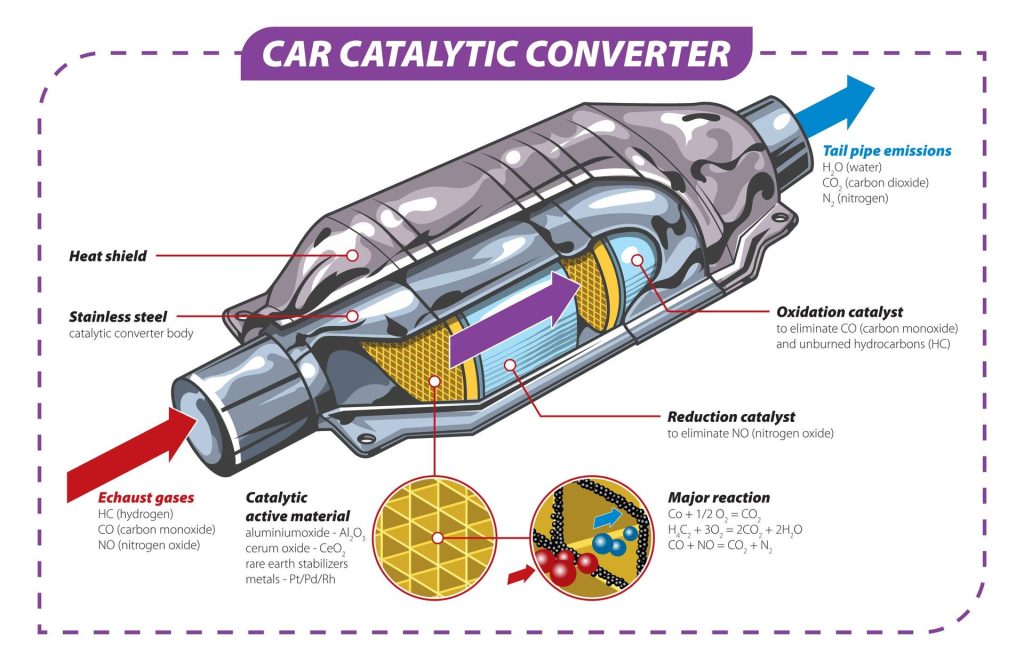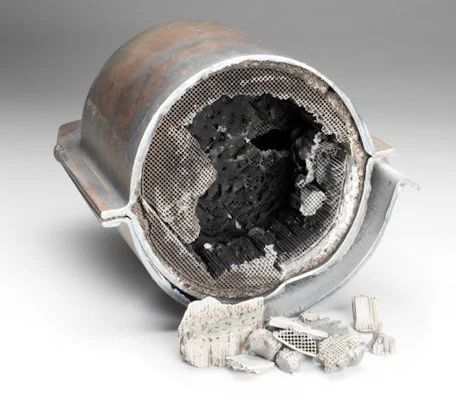Repair instructions
How to Unblock a Catalytic Converter: A Mechanic’s Guide
Summary:
Fuel delivery issues and engine misfires can overheat and damage the catalytic converter, often leading to clogging and eventual failure. Symptoms of a clogged catalytic converter include poor engine performance, an illuminated check engine light, and failure to pass emission tests. While special fuel additive kits may sometimes help clear minor blockages, replacement of the catalytic converter is often the only permanent fix.
1. What You Need to Know About Catalytic Converters

The engine in your vehicle is a “breathing” system—it needs to take in air and expel exhaust gases. After the engine burns fuel and air, the exhaust gases are funneled through the exhaust system, starting with the catalytic converter.
The catalytic converter houses a honeycomb-like structure made of a ceramic material. This honeycomb is coated with precious metals (like platinum, palladium, and rhodium) that help break down harmful emissions.
- The first stage of the catalyst breaks down nitrogen oxides (NOx) into nitrogen and oxygen.
- The second stage deals with hydrocarbons (HC) and carbon monoxide (CO), converting them into carbon dioxide (CO2), which is safer and even beneficial to plants.
2. How to Identify a Clogged Catalytic Converter

Before catalytic converters became mandatory (pre-1972), vehicles used leaded gasoline, which would coat engine parts and cause damage. After the introduction of catalytic converters, leaded fuel was phased out. Today, there are several causes of clogged converters, including excessive carbon buildup from engine misfires or a rich air-fuel mixture.
Signs your catalytic converter may be clogged include:
- Reduced engine performance (sluggish acceleration or stalling)
- Poor fuel economy (your car burns more gas than usual)
- Check Engine Light (or MIL – Malfunction Indicator Light) comes on
- Failed emissions tests (high levels of pollutants in exhaust gases)
If your engine is burning excess fuel (like from a misfire), you might notice black smoke from the exhaust, a telltale sign that the catalytic converter is collecting soot.
3. How to Unblock a Catalytic Converter?
In most cases, you can’t truly “unclog” a catalytic converter once it’s fully blocked. Here’s a breakdown of your options:
1. Use a Catalytic Converter Cleaner
For minor blockages (often due to hydrocarbon soot from a rich air-fuel mixture), you can try using a fuel additive designed to clean the catalytic converter. These products may help clear out some of the soot. However, results vary, and this is not a guaranteed solution.
2. Check the Cause of the Clog
Before attempting any cleaning, make sure to fix the root cause of the clog. A faulty air-fuel mixture is often the primary issue. If the mixture is too rich, excess fuel can build up and cause the converter to overheat. This problem must be corrected, or the new catalytic converter will clog up again.
3. Replace the Catalytic Converter
When the converter is clogged with debris, melted internals, or other non-soot blockages, the only true solution is to replace it. If the internal catalyst material has deteriorated or broken apart, you might hear rattling when tapping the converter with a rubber mallet. In this case, replacement is the only fix.
4. Prevent Future Clogs: Choose the Right Replacement
If you’re replacing a clogged catalytic converter, make sure to choose a high-quality replacement that matches your vehicle’s specifications. Here are a few things to consider:
- OEM vs. Aftermarket: OEM (Original Equipment Manufacturer) parts are typically more reliable, but aftermarket converters can be more cost-effective.
- Fitment: Ensure the replacement fits your vehicle’s exhaust system properly. Some vehicles may have multiple catalytic converters (for example, one for each bank of cylinders), so check that you’re replacing the right one.
- Fuel System Maintenance: Regular maintenance of the engine’s fuel system is crucial to prevent future catalytic converter clogs. This includes ensuring proper fuel pressure, a correctly functioning fuel injector system, and regularly checking the ignition system to avoid misfires.
Pro Tip: Address Engine Issues Before Replacing the Converter
If your catalytic converter is clogged due to an engine issue (e.g., excessive fuel consumption or a misfire), it’s critical to address the problem before installing a new converter. Without fixing the root cause, you risk damaging the new catalytic converter and creating the same problem again.
A clogged catalytic converter is no small issue, and while cleaning additives may help in some cases, replacing the converter is often the most reliable solution. If you’re dealing with a clogged cat, don’t skip the necessary diagnostic work to ensure the cause is fixed to avoid future issues.
